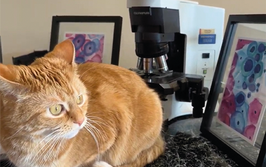Genetic Factors in Schizophrenia
Could this GWAS result in the first completely new drug treatment for schizophrenia since the 50s?

The Schizophrenia Working Group (SWG) of the Psychiatric Genomics Consortium conducted a multinational genome-wide association study (GWAS), that has identified 108 loci associated with the risk of developing schizophrenia, 83 of them new. It marks the largest genomic study ever undertaken for a mental health condition (1).
“This paper is a landmark. We have never before had such a profound and important look into the inner workings of schizophrenia,” says study co-author Patrick Sullivan, professor of genetics and psychiatry at University of North Carolina, USA, and director of the Center for Psychiatric Genomics. Genotype data was obtained and statistically analyzed from over 30,000 cases and more than 100,000 controls.
So how will this benefit patients with the condition? According to the authors, all current antipsychotics used in schizophrenia are thought to target the type 2 dopaminergic receptor – a mechanism discovered over 60 years ago. The SWG believe that a deeper understanding of the disease etiology is critical to breaking out of this therapeutic stasis.
Perhaps unsurprisingly, many of the genes identified are expressed in the brain, especially ones involved in neuron and synapse function, synaptic plasticity and cell signaling, although others were also active in the immune system.
Despite the new information, one of the authors, Michael O’Donovan, (deputy director at the Institute of Psychological Medicine and Clinical Neurosciences, Cardiff University, UK), cautions that we shouldn’t get too ahead of ourselves and emphasizes that the study is only the beginnings of understanding the biology. “Follow-up experiments will be needed to understand the impact of these genetic variations on the disease,” he says.
According to O’Donovan, there is already interest in genes encoding calcium channels and glutamate signaling, but he explains that it would be a “brave person” who expressed high confidence that these will be successful treatment targets. In addition, despite the growing body of information on schizophrenia risk factors, the likelihood of predicting risk with accuracy remains low. He adds, “I believe that at best, we may be able to add information to risk prediction. But I do not think that genetic testing in the general population will be accurate enough for diagnostic purposes. The role of other factors is important.”
As for next steps, O’Donovan explains that even larger sample sizes should provide more information. Also, the current information needs to be used to its full potential; “People need to figure out how genetic variation in the systems we identify is acting,” explains O’Donovan, “We need to link genetic changes to changes in the function of the genes and cells and brain. That will require a lot of non-genetic experiments from cell biologists, brain imagers, and psychologists.”
D-amino acids
- Schizophrenia Working Group of the Psychiatric Genomics Consortium, “Biological Insights from 108 Schizophrenia-Associated Genetic Loci”, Nature, 511, 421-27 (2014).
I have an extensive academic background in the life sciences, having studied forensic biology and human medical genetics in my time at Strathclyde and Glasgow Universities. My research, data presentation and bioinformatics skills plus my ‘wet lab’ experience have been a superb grounding for my role as an Associate Editor at Texere Publishing. The job allows me to utilize my hard-learned academic skills and experience in my current position within an exciting and contemporary publishing company.




















